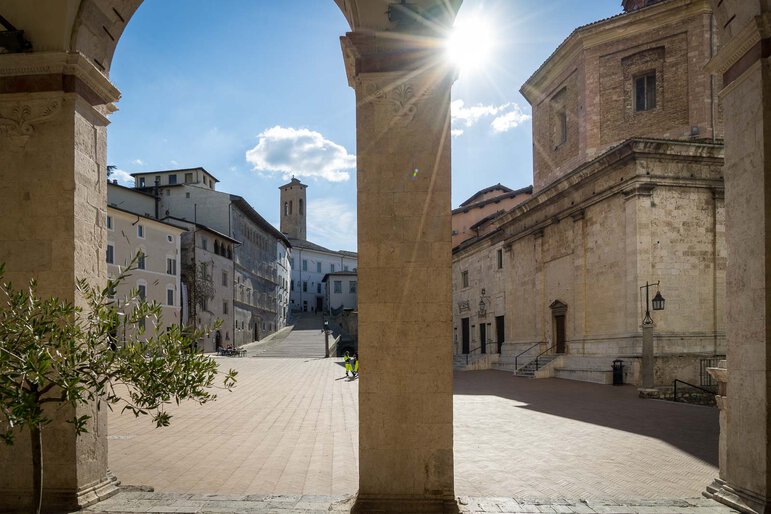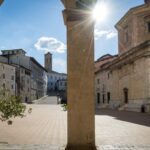Wedged among woods on a hillside, Spoleto is a nearly perfect medieval city with loads of charm in a beautiful setting. Today's town is a vibrant place with cultural opportunities and a perfect position for seeing central Italy. Spoleto is home to two important annual events - the Two Worlds Festival (Festival dei Due Mondi), a celebration of art, music and theater; and the Spoleto Jazz Festival, which bring people from all over the world. The mingling of cultures and artistic sharing gives Spoleto a stimulating and animated atmosphere.
The town has ancient origins, first inhabited by the Umbri people and then by the Romans. It was developed as a colony in 241 BC and was built up by the Romans as Spoletium. Its strategic position smack in the middle of Italy gave it status and importance and it had autonomy and its own magistrates. There are many traces of the ancients in the streets, including the Arco di Druso, a first-century Roman arch, the Casa Romana, thought to be the home of Emperor Vaspasian's mother, and a well-preserved amphiteathre. The Basilica of San Salvatore is built over the remains of a Roman temple, and the present day Piazza del Mercato rests over the ruins of the Roman forum. The National Archeological Museum displays artifacts from the millennia of history that Spoleto has witnessed.
The compact historic center is a delight to meander. The medieval streets are well-kept and the town maintains its ancient atmosphere. Medieval-era shops line up along narrow streets, still being used by artisans and boutiques. Archways, stairways, balconies, and flower boxes decorate the alleyways. Tucked away are loads of interesting shops, gelaterias, and delectable restaurants where you can sample the areas specialties. Take a stroll along the antique protective walls on Via delle Mure, or meander the charming lanes like Via Monterone, Via Fontesecca and Corso Garibaldi.
The sloping Piazza del Duomo fans out toward the Cathedral, a 12th century church with a uniquely adapted "Umbrian style" Romanesque facade hiding a Baroque interior. The famous frescoes, however, date from the Renaissance, with the delightful cycle by Filippo Lippi depicting the Life of the Virgin in the church's apse, and the acclaimed Madonna With Child by Pinturicchio. A Baroque Madonna With Child and Saints by Anniballe Carracci is also noteworthy.
Spoleto's Art Gallery, known as the Pinacoteca, contains some works by Perugino along with other treasures. The Church of Sant'Ansano has 6th-century frescoes covering the crypt. Don't miss the fancy fountain in Piazza del Mercato adorned with a clock. And the Ponte delle Torri, a 14th-century aqueduct, is a high arched bridge that forms a narrow passage open to pedestrians from the Rocca, a heavy, six-towered fortress that once guarded the city against invaders.
Spoleto has a lively vibe, with lots of interesting sights, nice shops, and great restaurants where you can sample the Umbrian fare, which is bold with the flavors of truffles, porcini mushrooms, salami, sausage, and roasted meats. The wine is well-known - Sagrantino and Montefalco for the reds and Orvieto is a famous white wine from the region.
With its central position at the geographic heart of Italy, Spoleto is close to Umbria's best attractions, like Orvieto, Assisi, Deruta, Todi, Trevi and Norcia.


